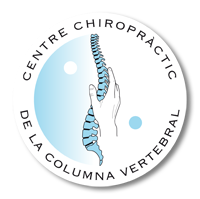Chiropractic treatment for Chondromalacia
The knee is one articulation that joins “the femur” (the upper leg bone) with “the tibia” (the lower leg bone).
What is Chondromalacia Patellae?
The function of the knee is not only to join bone of the thigh to bones of the leg, but also to articulate it. This joint is also built to withstand the impact of supporting the impact of your body weight, bend down and to move.
The outer part of the knee, that can be touched on the outside, is called kneecap. Its inner part is covered by a layer of healthy cartilage and its function is to be able to slide with its smooth surface and to reduce joint friction. It also acts as a natural shock absorber.
Injuries, excessive use, a bad alignment, a subluxation, aging or other conditions can damage the cartilage indispensable for a good performance in the medium and long run. If its wear is abnormally fast, then we are talking about the pathology called Chondromalacia Patellae or Patellofemoral syndrome.
Symptoms
The most common symptom of Chondromalacia Patellae or Patellofemoral pain syndrome is pain in the front of the knee. It is often described as a deep, deaf pain in the knee. This pain tends to get worse when the patient sits with the knees bent for a long time, when squatting or kneeling, or when going up or down stairs.
Injury is another common factor in Patellofemoral pain syndrome. When the kneecap suffers trauma like a fracture or dislocation. There are several factors that can increase a person’s risk of developing Patellofemoral pain syndrome. For example, age, but it is also often seen in young adults and adolescents, suffering from microtrauma or everyday joint injuries due to pelvic imbalance or pelvic tilt, due to a subluxation. Then, the overpressure, the abnormal friction of the cartilage, is transmitted to the entire chain of the lower limb, injuring the patellar cartilage.
Older people with knee pain often experience the effects of arthritis. Gender is another risk factor. Women develop the disease twice as often as men. Doctors theorize that this is due to the skeletal structure of women: the pelvis is wider, which increases the angle where the bones of the knee joint meet. People who participate in certain sports, such as those who do a lot of jumping and running, have a higher risk of developing the disease. This is especially true if you suddenly increase your level of training.
While doctors traditionally prescribe medication and even surgeries, less invasive treatments for knee pain are possible and without medication. Chiropractic is one of these well-known options in the world of sports, for its optimal results.
Chiropractic treatment for Chondromalacia Patellae
A subluxation and a pelvic tilt, affects alignment, muscle tone and muscle tension of the rectus femoris of the quadriceps muscle originating from the anteroinferior iliac spine of the pelvis. The over-tension of this muscle crushes the kneecap which acts as a pulley that enhances the force of the mechanism to extend the leg. Then the friction on the bone increases and in turn, smooth cartilage wears away. This over friction ensures inflammation, wear and pain on the knee on the side of the inferior pelvic tilt.
Structural problems affecting the knee responds very well to chiropractic treatment. In the case of Patellofemoral syndrome and other knee problems, it has been shown that chiropractic treatment improves joint biomechanics, reduces pain, and helps remarkably to improve the condition, providing the patient with better mobility, flexibility and quality of life.
Step by step treatment
The goal for the biggest part of the treatment for Chondromalacia Patellae or Patellofemoral pain syndrome to level the pelvic positioning to decrease the origin of the problem, removing the abnormal muscle tension that creates joint overstress of the knee wearing down the back of the kneecap. In addition, it improves the tracking of the kneecap and increases motor control. The whole- body approach that chiropractic care offers not only provides knee pain relief, but often reduces the condition itself.
If you or a loved one suffers from knee pain, get a chiropractic checkup. Your chiropractor will do a full examination to determine the origin of the problem and will implement the appropriate treatment protocol based on your condition.
CONTRAINDICATED TO SIT
In the first 10 to 15 minutes after your visit it is contraindicated to sit down.
During this period of time it is necessary to walk to mobilize the joints that we just release and walking also facilitate better joint lubrication and nutrition of the intervertebral discs.
IN THE NEXT 24 HOURS
During the next 24 hours following the first sessions avoid any excessive effort.
Otherwise, the effectiveness of the adjustment received will decrease.
BEFORE AND AFTER
Before and after every visit, avoid all kinds of tension.
Both physical and mental. The more relaxed you are the more benefit you will get from your treatment.
THE APPOINTMENTS
The set appointments must be respected.
They have been established to obtain the best results.
AFTER AN ADJUSTMENT
The sensations that each person may experience after an adjustment may vary without affecting the result and benefit of the treatment in the medium and long term.
After an adjustment, you may experience a feeling of relaxation, having a lot of energy, general well-being, disappearance or relief of symptoms, soreness or pain.
You may sometimes even experience discomfort since the body has to adapt to the new posture and position.
Links of interest
Articles about Chondromalacia




